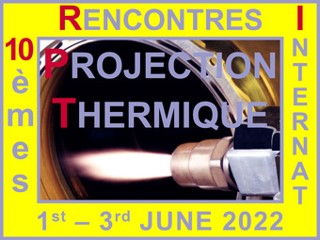Regroupement International de la Projection Thermique (RIPT), Jülich (Germany), 01 – 03 June 2022, (poster accepted)
Geoffrey CELESTE1, Vincent GUIPONT1, Djamel MISSOUM-BENZIANE1, Guillaume KERMOUCHE2, Sergio SAO-JOAO2, Séverine Girard-Insardi2
1 Centre des matériaux – CMAT, Mines ParisTech – PSL, UMR CNRS 7633 ; 63 – 65 rue Henri-Auguste Desbruères, 91000 EVRY, France
2 Science des matériaux et des structures – SMS, Mines Saint-Etienne, UMR CNRS 5307 ; 158 cours Fauriel, 42023 SAINT-ETIENNE, France
Most of ductile metals can be deposited by cold spray (CS). For brittle ceramic, such solid-state deposition process is still questionable, but some recent work on Ti02 or hydroxyapatite powders have shown that coarse ceramic powder could be deposited by CS. It is claimed that the porous architecture of a ceramic powder with agglomerated ultra-fine grains play an important role on the impact behavior. The aim of this work is to investigate the deformation behavior of a ceramic agglomerated powders under impact. A 3Y-TZP powder was selected in order to study its architecture (particle size, porosity, density, crystallite size, etc.). Cold spray experiments with various spraying distances to vary the particles velocities upon impact were carried out. Isolated particles (“splat” experiments) and regions coated with particles built-up involving a stationary nozzle (“spot” experiments) were observed in order to investigate the deformation and fragmentation of the powder. In parallel, in situ SEM microcompression test at 10−2 s−1 on cross-sectioned 3Y-TZP granules (flatpunch nano-indentation and micro-pilar compression) were performed to identify a Drücker-Prager model suitable for a porous ceramic granule. The deformation behaviors were then implemented in a simulation of a particle impact for further comparison with experimental results.
Disponible sur : https://hal-mines-paristech.archives-ouvertes.fr/hal-03738456v1
